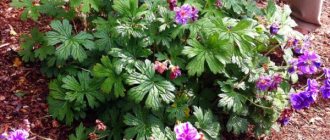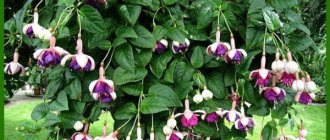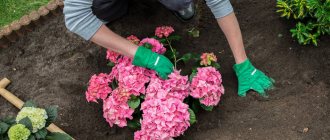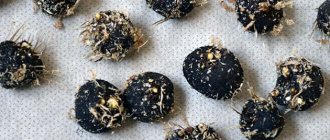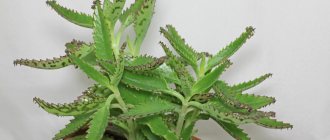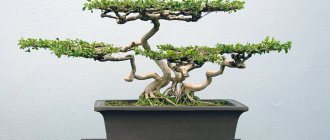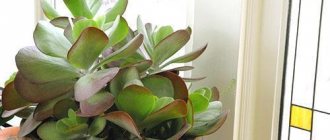Is it possible to plant Kalanchoe outdoors for the summer?
Is it possible to plant Kalanchoe outdoors for the summer?
There are quite a few types of Kalanchoe, some bloom luxuriantly, others not, but they are all very useful plants for the home and are believed to improve the health of indoor air. The medicinal properties of Kalanchoe are well known to everyone, and for this it is even called the Living Tree. Like many other indoor flowers, Kalanchoe can be transplanted into open ground in the summer or simply taken directly into the pot in the fresh air. You just need to avoid places that are too open and sunny, because although Kalanchoe is a succulent and easily tolerates dry climates, it loves places where direct sunlight does not appear so often. Blooming Kalanchoe can be an excellent decoration for any flower bed.
All indoor flowers (including lemons) grow well in open ground in summer, but they must be prepared for open sunlight and heat.
They are used to growing in a room where there are no sharp temperature fluctuations and direct sunlight does not burn them.
Therefore, if you take them out and plant them in the ground without preparation, the leaves will definitely burn (turn yellow, wither, wither), and if it gets colder at night to +12, then the stems and roots will suffer.
The wife commands all the flowers in our family, but I also participate in such processes as an assistant.
And we have several varieties of Kalanchoe and they all grow in the flowerbed in the summer.
Kalanchoe is quite suitable for growing outdoors. It should be borne in mind that it is not frost-resistant. Therefore, it should be planted outside after the threat of frost, including night frosts, has passed. For central Russia this is not earlier than the beginning of June.
Source
Kalanchoe paniculataflora
This species is a herbaceous perennial that grows up to 60 cm in height. The shoots are covered with elliptical leaves, narrowed at the base. The leaf width is about 6-7 cm, the length is about 15 cm. The density of the crown increases at the base of the trunk. The apical leaves are small in size and grayish-white in color. This type of Kalanchoe is “viviparous” and forms “babies” along the edges of the leaf plate. Flowering begins in May with medium-sized bright yellow flowers. Likes to be grown in fertile soil on south-west windows.
Kalanchoe outdoors in open ground: can it be planted outdoors?
Planting in open ground is possible in the summer season; experienced gardeners believe that such a procedure is even necessary and useful. Fresh air, moderate ventilation and natural light have a beneficial effect on succulents. Since there are no specific varieties of outdoor Kalanchoe and indoor ones, you can plant a plant outside that usually grows at home.
Kalanchoe is a succulent plant
Description of the Kalanchoe houseplant
Kalanchoe belongs to the family Crassulaceae and the genus of succulents, for which the flower is sometimes called a succulent. In its natural environment it can reach a height of up to 3 m. Varieties grown at home are more compact and do not grow more than a meter in height.
The plant has fleshy leaves with small fibers on the surface. Leaf blades, depending on the type and variety, may have smooth or jagged edges. Succulent flowers can also be of different colors, depending on the variety: white, pink, red, burgundy. Large inflorescences are on long and tall peduncles.
Planting Kalanchoe in open ground at the dacha
Kalanchoe is planted in open ground at the dacha in the spring, when the ground warms up noticeably. Before planting a succulent in your summer cottage, you need to put the pot outside for a few hours for several days so that the flower can quickly get used to the new weather conditions.
Note! You can begin to carry out this procedure after winter, when the last severe frosts end and the temperature rises to 12 ° C.
Temperature regime for the plant
A heat-loving flower can tolerate short-term coolness without serious consequences when the temperature drops to 7 °C. The optimal temperature at which it is necessary to grow a succulent in the summer at the dacha is considered to be 19-24 °C. Small deviations from the norm will not cause harm; the main thing is to pay special attention to the flower at this time.
The succulent does not like too high a temperature, so in hot weather it is necessary to spray the aboveground part more often with water from a spray bottle and increase the frequency and abundance of watering followed by loosening the soil, otherwise the moisture will stagnate in the soil.
Important! In autumn, when the temperature begins to drop below 10 °C, it is necessary to transplant the Kalanchoe back into the pot and bring it indoors.
Air humidity
The humidity outside is moderate and suitable for growing succulents, unlike indoors. At home in the winter, the air becomes dry due to heating, and in the summer, strong changes in indicators are possible. In an open area, due to constant ventilation, the level of air humidity does not change sharply.
During the dry period in summer, sprayers can be placed next to the flower to increase humidity and prevent the leaf blades from drying out.
Location and lighting
It is better to plant Kalanchoe in the country in a moderately dark place. Direct sunlight can cause burns on the plant's tender leaves. It is also recommended to protect the bush from piercing winds by planting it next to a fence or near a large bush, tree or any building.
Features of feeding
Kalanchoe in the garden, as well as at home, needs mineral and organic fertilizers. It is better to purchase complex fertilizers for succulent plants in specialized stores. They already contain the required amount of nutrients in the right dosage.
The first fertilizing in open ground is done after transplanting the flower into the ground. It is important that the fertilizer contains a high nitrogen content.
The flower can be fertilized with a nitrogen-containing preparation only before flowering. The second feeding should be carried out in mid-summer with a preparation with a high potassium content, it is useful for flowering. In the fall, fertilize with organic fertilizers.
Note! Autumn fertilizing is best done after transplanting into containers for indoor growing.
Specifics of transplantation
After flower growers decide whether it is possible to take Kalanchoe outside in the summer, another task arises about how to properly transplant the flower into the soil on the site. You can simply take the plant along with the pot into the garden, or you can transplant it into open ground.
The plant should be planted only when the soil in the garden has warmed up. In the selected area, holes are dug with the depth and diameter of the pot in which the house flower grew. At the bottom of the hole, it is advisable to line a drainage layer of expanded clay chips. It will help avoid moisture stagnation after watering and rain. Then a layer of humus soil is poured over the drainage, on which a bush with root soil is placed. The remaining space is filled with earth and lightly compacted.
For your information! After planting outside, you can mulch with pebbles or sawdust.
Succulent outdoors
Kalanchoe Benta
This type of Kalanchoe differs from others in its ability to accumulate moisture inside the leaves. This way it builds up moisture reserves and the leaves have a fleshy, thick texture. This property allows the plant to be moistened extremely rarely, and the juice accumulated in the leaves has a wide range of healing properties. The appearance of the plant is a highly branched large shrub that grows up to one meter in height when grown indoors. The leaves on the trunk are large, have an elliptical shape and are arranged in 6 pairs. Kalanchoe Benta blooms with snow-white flowers, which are collected in umbrella inflorescences. The flowers have obovate petals. Flowering begins in mid-spring and lasts for a month. In order to prolong the flowering period, as well as to help the plant regain its strength after it, you should feed the Kalanchoe with complex mineral fertilizers.
Planting and caring for Kalanchoe outdoors in the garden
To grow Kalanchoe outdoors in open ground, you need to gradually accustom the plant to outdoor weather conditions. A couple of times before transplanting the flower, you should take the pot out onto the balcony, gradually increasing the length of stay.
Northern latitudes are not suitable for growing succulents outdoors, but in the middle zone the flower will spend the summer well in open ground. For example, this growing method has long been practiced in the Moscow region. The main thing is to follow the rules when planting and caring for Kalanchoe outdoors in the garden.
You need to choose a place to plant a flower where it will be provided with at least 10 hours of daylight. In this case, you need to protect the bush from direct rays of the sun. Periodically you need to loosen the soil; it is recommended to carry out the procedure after each watering. It is necessary to water the flower when the top layer of soil dries out. Too wet soil will lead to rot and fungus, which can cause serious illness.
For your information! It is necessary to prune the bush to remove excess flower stalks, which helps conserve its strength. You also need to remove rotten and dried leaves and shoots in a timely manner.
Kalanchoe – 95 photos of growing conditions and options for use in landscape design
Kalanchoe is a representative of succulents that have the ability to accumulate moisture. Popularly, this plant has its own name - the Tree of Life.
Some consider Kalanchoe to be a variety of the well-known aloe. This is not a correct opinion because plants belong to different families.
Many people actively use Kalanchoe for medicinal purposes. And this is not surprising, because the plant has many beneficial properties.
The succulent is unpretentious and hardy. Able to adapt to difficult conditions. Even a person who is not knowledgeable in floriculture can grow Kalanchoe on their own.
The plant certainly needs care, but it is not very demanding. If you want to have a Kalanchoe, caring for it at home is minimal and simple.
Varieties of Kalanchoe
There are a lot of photos of Kalanchoe on the Internet, after studying which you can come to the conclusion that this plant exists in more than one form. Let's take a closer look at some of its representatives.
Beharskoe
Herbaceous perennial with bare stems. Its waxy leaves are slightly pubescent. Blooms with small flowers. The plant comes from Madagascar and is very ornamental. Does not like heat and bright sunlight.
Benta
Subshrub with thick leaves. Blooms with white flowers in late spring. Origin: Arabian Peninsula. Prefers cool places.
Blossfeld
One of the most popular and attractive types.
The low bush of the plant blooms long and densely with bright red flowers. This Madagascar Kalanchoe in bloom is simply beautiful. It will be a worthy decoration for any home.
Felt
Subshrub with downy shoots. Blooms profusely with small flowers.
Degremona
Perennial herb with fleshy leaves. The leaves have a different color on each side. It blooms with pink flowers in the winter season.
Marble
Also known as Somali. The green leaves of the plant eventually change their color to gray with large lilac veins. The homeland of this Kalanchoe is Ethiopia.
Mangina
A distinctive feature of this plant is its large bell-shaped flowers. The peak of its flowering is spring.
Plant care details
It's time to learn how to care for Kalanchoe at home.
Lighting and location. The succulent does not require good lighting. In summer it is better to keep it on the western or eastern sides.
In winter he will be more comfortable on the south side. Bright sunlight can burn the plant. Therefore, keep it out of direct sunlight.
If there is not enough light, the Kalanchoe can become very elongated. In order for the plant to bloom regularly and profusely, it needs to be provided with 12 hours of light per day.
Temperature conditions. The plant tolerates summer heat well, exceeding 30 degrees. In winter it needs coolness (it is recommended to maintain the temperature no more than 18 degrees). In this temperature regime, the plant is guaranteed to bloom.
Humidity in the room. This point can be ignored. Kalanchoe thrives in dry climates. It also copes well with high humidity. It is enough to lightly spray the plant periodically to maintain hygiene.
Kalanchoe in medicine
The healing properties of Kalanchoe have been known for a long time. The plant is used in medicine and cosmetology. The chemical composition of the succulent contains useful micro- and macroelements. They affect oxidative processes.
Steroids stimulate cardiac tone and prevent the development of tumors.
Organic acid in aloe leaves has choleretic properties and a bactericidal effect. Improves metabolism.
Tanning enzymes act as an antimicrobial agent and have an astringent effect.
Kalanchoe is actively used to treat many internal and external diseases.
Possible difficulties
When planting a succulent in open ground, difficulties often arise in the form of climate change, the appearance of pests and diseases. Improper care will also worsen the condition of the flower.
Pests and diseases of garden Kalanchoe
If its leaves begin to turn yellow and dry out, then it is necessary to cover the bush from the sun and increase watering. The same symptoms occur when a plant becomes sick with chlorosis. It needs to be treated by spraying the above-ground part of the plant and treating the soil with a solution of iron sulfate. When drilling leaves, it is necessary to loosen the soil and reduce watering.
Of the pests, the most troublesome is aphids, which are located on leaves and shoots in the form of small green insects. The leaves of the flower begin to turn yellow and fall off. Insecticides or treatment with a soap solution will help cope with the problem.
It is necessary to plant in open ground only in summer.
Flower growers are often interested in the question about Kalanchoe: is it possible to plant a flower in open ground? The plant is exotic, accustomed to warmth, but due to its unpretentiousness it is able to grow in climatic conditions of mid-latitudes. The main thing is to replant it in time before the first frost and put it indoors for the winter.
Source
Kalanchoe Flame
This variety is a perennial herbaceous plant of medium height. Often found in nature in Somalia. Its height varies up to 35-40 cm. The stems are decorated with oval small leaves, broadly rounded on one side. It blooms with orange or red flowers, forming umbrella-shaped inflorescences. They are grown in the same conditions as other types of this plant.
How to transplant Kalanchoe yourself so that the plant takes off and grows?
If in nature different types of Kalanchoe can reach from 20 cm to 4 meters in height, then in potted culture these perennial herbaceous shrubs do not exceed half a meter, grow well and regularly delight with the appearance of inflorescences.
Kalanchoe Marble
This is a succulent plant, which is also known as Somali or large-flowered Kalanchoe. This species came to us from Ethiopia. In nature, it occurs as a subshrub about half a meter high. The stems are decorated with dark green leaves, which over time acquire a gray tint and brown or lilac spots. The leaves have an elliptical shape, narrowed at the base. The edges of the sheet contain a notch. Flowering begins in the second half of spring and lasts up to two months. During this period, the bush is covered with snow-white fluffy flowers. This species does not require special care, but requires infrequent watering and cultivation in sufficient light. Propagated by cuttings, leaves or apical shoots.
Is it necessary to replant Kalanchoe during flowering?
With good care, Kalanchoe grows quite quickly, and not only the above-ground part grows, but also the root system.
This means that from time to time the plants need to be replanted into a larger pot or several Kalanchoes must be planted in separate containers. How to replant Kalanchoe? And when is it better to carry out this procedure in order to injure the plant less and not interfere with its flowering? Often Kalanchoe of such decorative species as Kalandiva and Blossfelda come into the house already in bloom. At the same time, flower growers are faced with a difficult problem. Is it worth immediately replanting Kalanchoe, which has inflorescences of all shades?
If the bush is replanted during the flowering period, this will become stressful for the plant, to which it will respond by dropping the buds and taking a long, painful acclimatization.
It is better to postpone all manipulations with the bush until all the flower stalks have withered and been cut off. Until this time, it is necessary to create acceptable temperature conditions for the Kalanchoe and provide the indoor plant with proper watering and lighting. Before planting Kalanchoe, manufacturers must add a certain amount of long-term fertilizer to the soil, which should be enough until the end of flowering.
The only truly serious problem at this time is the possible drying out of the soil in a small shipping pot. This can be solved by placing the plant in a pot of suitable size, and on the surface of the soil make a mulching layer of nut shells, sawdust, pebbles or other material. The first Kalanchoe transplant at home is best done in the spring, when daylight begins to arrive, flowering ends, and the plant is ready to gain strength and grow.
Such a different Kalanchoe...
But Kalanchoe can look different, because as many as 200 species are merged into this genus! Some of them are particularly decorative and have dazzling colors, while others have medicinal properties.
At home, the following are most often grown:
- Kalanchoe Blossfeld - distinguished by decorativeness. Forms a compact bush, blooms with decorated inflorescences-umbrellas. The well-known variety series - Kalanchoe Kalandiva is characterized by terry colors.
- Kalanchoe Degremona is medicinal; the juice from its fleshy leaves is used to heal wounds, get rid of runny nose, etc. Refers to bryophyllums (viviparous Kalanchoe, breeding “babies”).
- Kalanchoe pinnate is also a medicinal bryophyllum. Its oval leaves with vein patterns resemble feathers, which is how the species got its name.
- Kalanchoe Mangina (Mangini) is a decorative bryophyllum with long shoots that form an ampelous bush. Blooms with bright red bell flowers.
- Kalanchoe tubiflora (tubiflora) is a fascinating bryophyllum with narrow leaves tucked inward and with many “babies” along their edges.
- Kalanchoe dissected - the so-called “deer horns”. Produces long shoots with dissected narrow leaves, shaped like deer antlers.
There are many other species, for example, Kalanchoe tomentosa, Kalanchoe paniculata, etc., but they are grown much less frequently.
Types of Kalanchoe
However, you can grow any Kalanchoe at home, following certain rules of care. They are almost the same for both flowering and deciduous forms of this wonderful plant.
Replanting Kalanchoe at home
As in subsequent years, the first transplant is carried out with extreme caution.
Before planting Kalanchoe in a new container, pay attention to the condition of the root system and stems of the Kalanchoe.
Such an inspection is necessary due to the sensitivity of Kalanchoe roots to stagnation of moisture and excessive watering.
The plant is removed from the pot along with the earthen lump, being careful not to lose the existing soil or damage the roots. To facilitate the process, shortly before transplanting, the Kalanchoe is well watered. This is extremely useful if you have to plant Kalanchoe, for example, by removing from under a large bush small daughter plants, rooted cuttings or rosettes that have fallen from the leaves.
Then the lump is carefully placed on a drainage sprinkled with soil, the empty spaces around the plant are filled with soil, compacting it a little. Finally, level the soil surface and mulch with a layer of pebbles, crushed shells or large wood chips. This method of caring for Kalanchoe during replanting at home will reduce moisture loss and prevent mold from developing, and will also prevent children and falling Kalanchoe leaves from contacting the ground and taking root.
If this is not done, after some time you will need to replant the Kalanchoe, since under the adult plant you will definitely find a mass of small rosettes that take away both nutrients and moisture from the bush.
Kalanchoe disease
Like most succulents, Kalanchoe does not like excessive watering. Overwatering and/or too little light can cause root rot and leave the plant vulnerable to pest infestation. Look out for common houseplant pests such as:
- Scales of succulent plants
- Spider mite
- Succulent aphid
If only a few of these pesky bugs appear, you can simply wipe them off with a clean cloth soaked in rubbing alcohol. For more severe infestations, try washing them off with a strong stream of water and then treating them with a mild pesticide, neem oil mixture, or garden soap.
Choosing a pot for Kalanchoe
A new pot for the bush is taken a couple of centimeters larger than the previous one. The optimal size of a slide for Kalanchoe is from 12 to 18 cm, depending on the variety and variety. Flowering varieties do not like the proximity of other plants, even related species. But if an excessively wide pot is chosen for replanting Kalanchoe of such plants, this can lead to the growth of the green part of the bush and failure to flower. You can get out of the situation by planting a couple of young rosettes on the Kalanchoe, obtained from apical petioles from the same bush or from children. Indoor flower beds made from several plants, simultaneously producing inflorescences of different shades, will look even more impressive. Kalanchoes that naturally grow in arid deserts, such as tomentose varieties or Kalanchoe Lucia, coexist well with other plants with a similar lifestyle. From these types of Kalanchoe you can create indoor gardens that imitate the corners of the rocky desert of southern Africa or Madagascar, which will become a unique addition to the interior. The best material for a pot is unglazed ceramics, in which all pores are preserved, which means the plant breathes, and from the soil naturally Excess moisture is removed.
Before transplanting the Kalanchoe into the selected pot, the container is washed with hot water and treated with a solution of potassium permanganate.
Reproduction of Kalanchoe
In its natural environment, the plant reproduces by seeds, but can easily be propagated by cuttings.
Propagation by seeds
Sowing is carried out in the spring, preferably in April. The seeds are planted in a substrate of soil for succulent plants and river sand. The seed should be placed in a shady place at a constant temperature of about 20 °C. After germination, the strengthened seedlings can be transplanted into a pot.
Propagation by cuttings
At the end of spring, using a well-sharpened and disinfected knife, cut off a branch without a peduncle 8-10 cm long and place it in water, and when roots appear, transplant it into a pot with moist succulent soil and sand. Place the pot in a protected place at a constant temperature of 20°C. The appearance of new leaves is a sign that the cutting has taken root.
Soil for Kalanchoe
If the soil in a transport pot with Kalanchoe is predominantly a mixture of peat and coconut fiber, then in a permanent place the plant will be more comfortable in nutritious, loose soil of a more harmonious composition, which must be maintained during subsequent replantings of the bush. This technique allows you to minimize the adaptation of Kalanchoe to new conditions.
For Kalanchoe, soil with an acidity level of 5.0 to 6.5 is preferred. This indicator can be achieved by adding dolomite or lime flour to the soil.
Soil suitable for Kalanchoe must be well-permeable to oxygen and water, provide proper nutrition, and not contain components that are toxic or dangerous to the plant:
But it is better to prepare the soil for Kalanchoe yourself, mixing equal parts of high-quality humus, garden soil and coarse sand.
To add structure to the soil, add one part of a mixture of brick or expanded clay chips and crushed coal.
Since there are a lot of plant varieties, but all of them are quite unpretentious to the proposed soils, a mixture of:
To protect the plant from dangerous pathogens of fungal infections and Kalanchoe pests remaining in the humus and soil, the soil must be steamed or heated in the oven before planting. Don't forget about drainage. This is an essential part of arranging a Kalanchoe pot. The drainage layer, at least 2 cm thick, is made of fine expanded clay or crushed brick.
After transplantation, Kalanchoe undergoes acclimatization, during which the plant requires support. Such special care for Kalanchoe after transplantation at home is feeding, which is carried out twice a month until the beginning of autumn.
In what form is it used for treatment?
After harvesting, Kalanchoe can be stored in different forms:
- infusion;
- ointment;
- tincture;
- decoction;
- juice.
For long-term use, it is better to make tinctures with alcohol; they retain the properties of plants for up to 1 year. You can add the plant juice to odorless olive or sunflower oil.
Transplanting a flower at home
When can you do it and why should you do it?
Kalanchoe grows very quickly, and the roots of the plant also grow, so it is recommended to replant it at least once a year. Kalanchoe is usually replanted in the spring after flowering, namely in April-May. But replanting is also a mandatory procedure after purchasing a plant.
Preparation
The soil
You need to take care of replanting a flower immediately after flowering.
It is very important to choose a high-quality soil mixture, the so-called substrate. The perennial flower prefers light soils that allow moisture and air to pass through well and have an acidity pH of 5.5-7. The substrate can be easily found in flower shops ; the finished mixture should be specially designed for succulents, allow water and air to pass through well, and not contain harmful impurities. Or you can make the soil yourself, for this you will need to mix in equal parts:
The self-prepared mixture needs to be disinfected; there are several ways:
Choosing a different pot
After you have purchased or made a substrate, you need to choose a container for replanting; experienced gardeners advise choosing a pot that is literally 2-3 cm larger in diameter than the previous container.
There is no need to choose a very large container, otherwise the roots of the flower will grow very quickly, and the growth of the plant crown, on the contrary, will slow down. It is also recommended to sterilize the pot before planting to prevent bacteria from entering the soil.
Drainage
Drainage is simply an essential part when planting Kalanchoe, which prevents stagnation of moisture in the soil. The drainage layer should be at least 2-3 cm. As a rule, crushed brick, pebbles or small expanded clay are used for drainage.
After the purchase
After purchase, the flower needs to be replanted, since the soil in which it is placed in the store is not suitable for such plants. It is advisable to replant the Kalanchoe immediately, unless it is blooming. Transplantation after purchase is carried out as follows:
Is it permissible to disturb a flowering plant?
Transplantation is possible only when you bought a flower and it is at the flowering stage. In this case, you need to replant the plant very carefully, using the transshipment method, so as not to damage the root system or disturb it too much. The transplant process is similar to that described above.
Step-by-step instructions for the procedure
The transplant procedure is almost always the same, it includes the following:
How to plant several plants in one pot?
Planting several flowers in one container is allowed in order to save space. In this case, the transplantation process occurs as follows:
If you decide to plant several flowers in one pot, it is worth considering the fact that during the growth process their roots will intertwine and further planting of plants will cause difficulties.
Is it possible to plant the crop outdoors?
To begin with, it is advisable to take the Kalanchoe out to the balcony or loggia, so you can see whether the plant will take root well in the open air. Further transplantation is no different from transplanting into another container:
But then you need to water it moderately so as not to overwater the plant and cause it to rot. And you should not neglect fertilizers, they will only benefit the flower, the Kalanchoe will be fed and it will have the necessary energy for further growth.
It is worth remembering that the period of planting Kalanchoe in open ground plays an important role; if there is a period of rain or, on the contrary, there is intense heat, this will most likely destroy the flower.
Errors during the procedure
If you still have little experience in floriculture, then you can make the most common mistakes. And to prevent this from happening, let’s consider the most popular ones:
Proper care after transplantation
Kalanchoe is a picky flower and there are no difficulties in caring for it. After transplantation, you need to give it time to adapt and create comfortable conditions for growth.
The temperature in the room where the flower is located should be within +23...+25 in summer, and +12...+16 in winter. It is also not recommended to place the flower near batteries and avoid high humidity so that the roots of the plant do not rot.
As for watering, in summer Kalanchoe needs to be watered once a week, and in winter once every two weeks. It is necessary to water at the root so that water does not get on the foliage and stem , otherwise it can lead to rotting.
After the plant has completely taken root in the new pot, it can be fertilized. Mineral or organic fertilizers are used as fertilizer; fertilizer is applied once a month.
In fact, replanting Kalanchoe is not the most difficult process. The most important thing is to follow the rules of replanting and provide quality care for the flower.
Popular varieties
There are more than 200 different species in the family. Here are some of the most popular varieties that you can find in flower shops.
Kalanchoe Tomentosa
Kalanchoe Tomentosa has very thick leaves that store water well and make the plant quite resistant to drought. The greyish-green leaves are also attractive because they are covered with soft, velvety hairs.
Tomentosa grows to approximately 54 cm in height and, when properly pruned, looks like a tree or bush. The lower branches will tend to droop, so this succulent can be a good choice as a hanging plant. When kept outdoors under favorable conditions, it sometimes blooms with bell-shaped, fuzzy flowers. It is unlikely to bloom indoors.
Kalanchoe becharensis
This hardy plant is a good choice for outdoor tropical gardens because it can reach a maximum height of 36cm. When grown as a houseplant, it usually reaches a height of around 12cm. Its large, slightly hairy leaves give it its common names
- felt bush
- Velvet leaf
- elephant ear
Kalanchoe Blossfeld
An unusual succulent, it is grown more for its flowers than its leaves. These flowering kalanchoes come in a variety of colors including white, yellow, pink, orange, red and purple. Long-lasting flowers remain fresh for several weeks. The plant's leaves are also attractive with a deep shade of glossy green that turns reddish in bright sunlight.
Kalanchoe Gastonis-Bonnieri
It is an attractive evergreen succulent that produces strikingly tall and attractive spikes of flowers in late fall and early winter. The spikes can reach 54 cm in height and are topped with light, fragrant yellow and red flowers.
